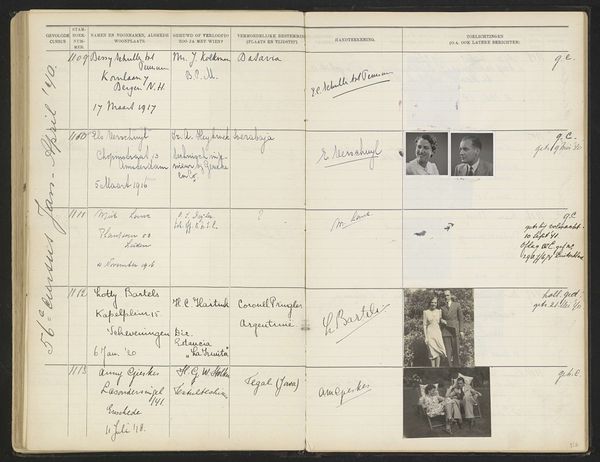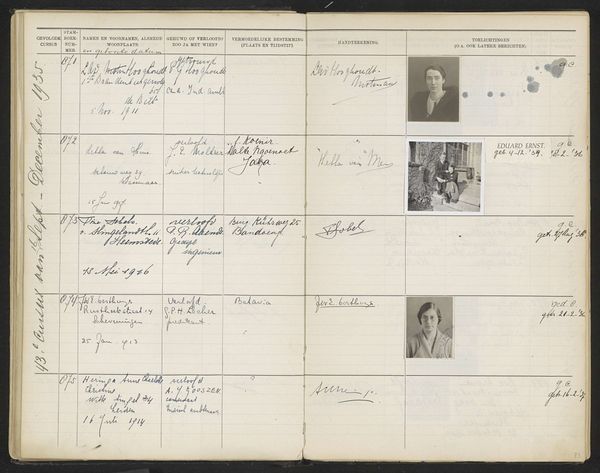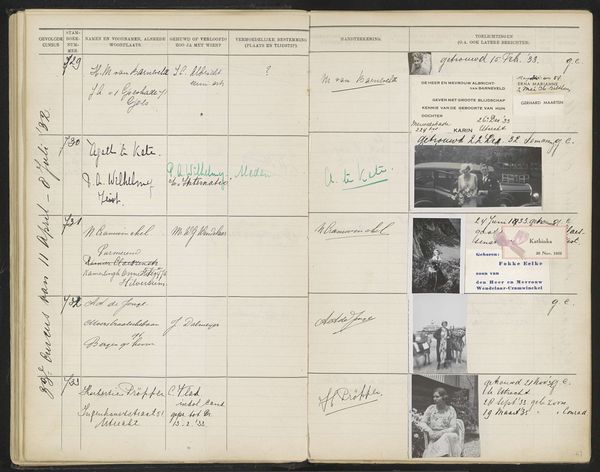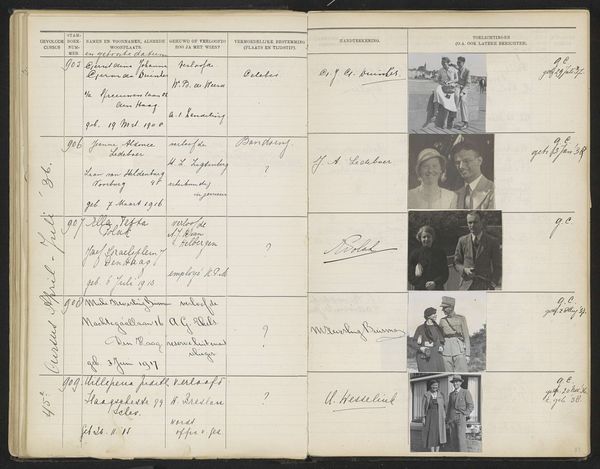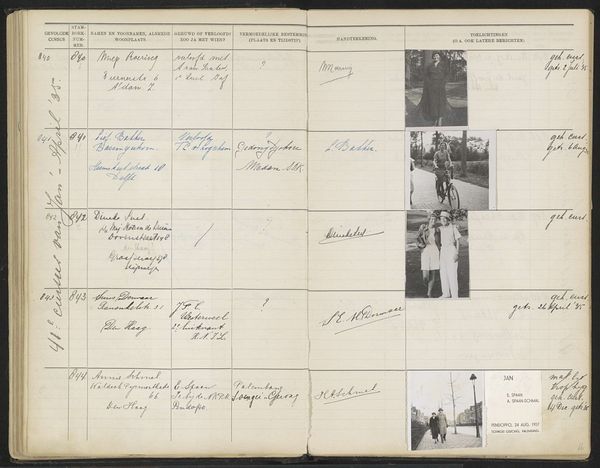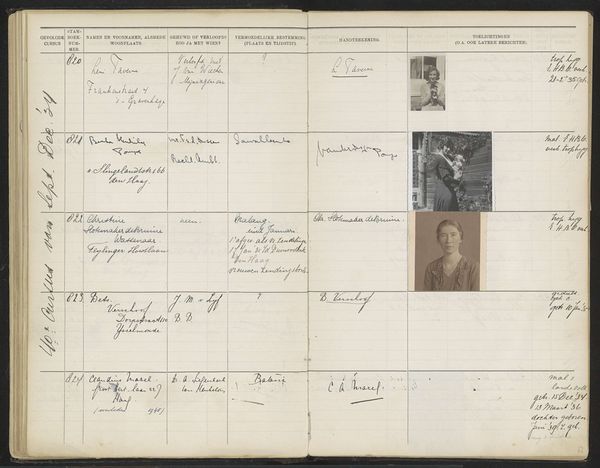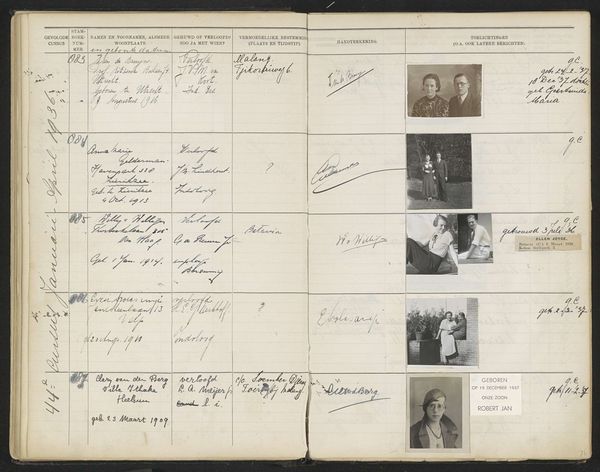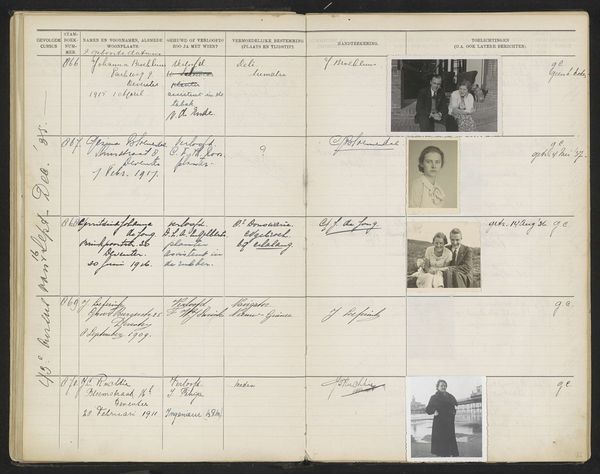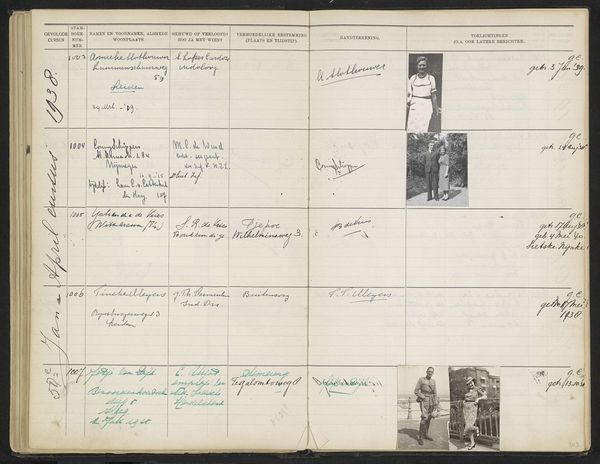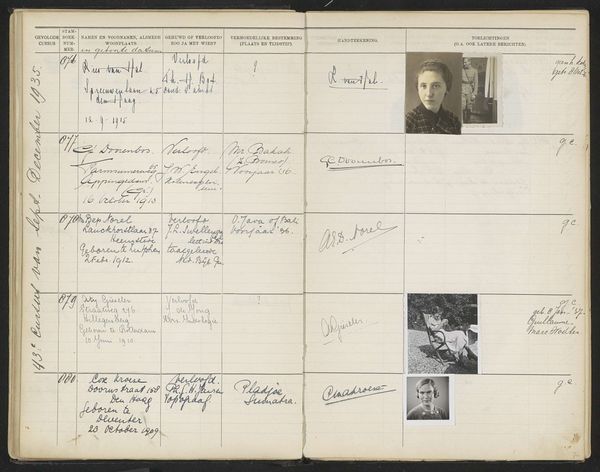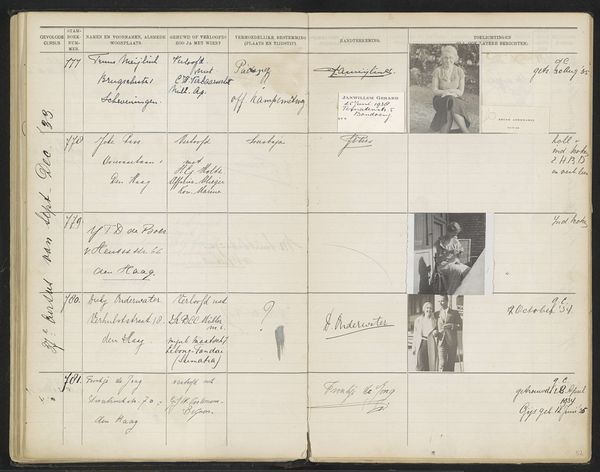
Blad 127 uit Stamboek van de leerlingen der Koloniale School voor Meisjes en Vrouwen te 's-Gravenhage deel II (1930-1949) Possibly 1940 - 1941
0:00
0:00
drawing, mixed-media, collage, print, paper, photography, ink
#
portrait
#
drawing
#
mixed-media
#
collage
# print
#
paper
#
photography
#
ink
Dimensions: height 337 mm, width 435 mm
Copyright: Rijks Museum: Open Domain
Curator: This object is folio 127 from the “Stamboek van de leerlingen der Koloniale School voor Meisjes en Vrouwen te 's-Gravenhage deel II (1930-1949),” or Register of Students of the Colonial School for Girls and Women at The Hague, Volume II. It seems to date roughly to 1940 or '41, given entries on the pages. It uses a combination of ink, photography, and other media. Editor: My immediate impression is one of controlled documentation struggling to contain bursts of personal narrative. The neat columns and rows contrast starkly with the individual photos pasted into each record. Curator: Absolutely. This folio, like the entire register, is fascinating as a material object. Consider the labor involved in creating it – the meticulous handwriting, the printing and pasting of photographs, the binding of the volume. This wasn't just record-keeping; it was a constructed artifact of colonial administration. Editor: I agree, but the photographs introduce a compelling layer of symbolism. Each portrait, though small, attempts to capture the essence of an individual within a broader bureaucratic framework. There's the inherent power dynamic of colonialism, where personal identities were cataloged and archived by the state, visualized here with smiling faces of students pictured in snapshots of them with their friends or significant others.. Curator: Precisely. The varying sizes and qualities of the photographs point to a lack of standardization, reflecting perhaps a less-than-fully-controlled colonial apparatus. This speaks to the complicated process through which state efforts at regimentation can get filtered down through layers of human action and be unintentionally individualized in practice. Editor: The handwriting adds another layer of meaning, those looping signatures that act as both affirmation and unique marker against an otherwise typified set of data entries. Even within this rigid structure, students leave traces of their identities. Curator: And the paper itself! Its aged texture, the ink bleeding slightly – these are tangible reminders of the passage of time, of the colonial project’s now historical status and eventual ending. Editor: This image, while seeming austere on the surface, invites us to contemplate the human stories woven into these colonial structures. It’s a compelling reminder of how individuals shape, and are shaped by, the symbols of their time. Curator: Indeed. It shows how institutional documentation inadvertently reveals a human element through the textures and production methods of daily work.
Comments
No comments
Be the first to comment and join the conversation on the ultimate creative platform.

